Land Invertebrates
Media
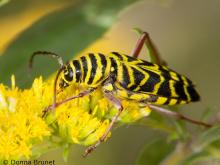
Species Types
Scientific Name
Megacyllene robiniae
Description
The locust borer is a longhorned beetle whose larvae tunnel into the trunks of black locust. The colorful black and yellow adults are often seen in late summer as they feed on the pollen of goldenrod and other flowers.
Media

Species Types
Scientific Name
About 2,000 species in North America north of Mexico
Description
Plant bugs, or mirids, are a huge family of true bugs. They are often overlooked — except by gardeners and farmers. Most mirids eat plants, and some are agricultural pests. As a group, they’re an important food source for birds and other insectivores.
Media

Species Types
Scientific Name
About 300 species globally
Description
True velvet mites: You’ve probably seen these small, velvety, bright red mites creeping around on rocks, plant containers, tree trunks, or on the ground, especially after a rain. Be not afraid! They are harmless — to people.
Media
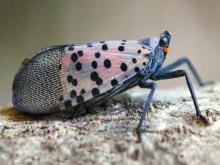
Species Types
Scientific Name
Lycorma delicatula
Description
The spotted lanternfly has not yet been found in Missouri, but it is present in several eastern states. It has the potential to damage our forests and food supply by feeding destructively on trees and crops.
Media
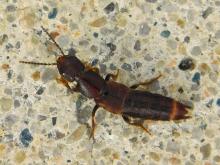
Species Types
Scientific Name
More than 4,400 species in North America north of Mexico
Description
Rove beetles usually have very short wing covers, so several of their hind abdominal segments are exposed. Typically fast movers, they often flip up their abdomen tips when frightened. This is a huge family of beetles.
Media

Species Types
Scientific Name
About 1,700 species in North America north of Mexico
Description
The scarab beetle family is very large, with breathtaking variety — and often great beauty. Many scarabs are large and colorful.
Media
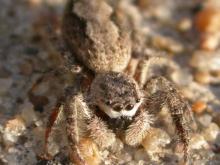
Species Types
Scientific Name
Platycriptus undatus
Description
The tan jumping spider usually lives on tree trunks. Its gray, tan, and brown coloration camouflages it against tree bark. There is usually an undulating pattern on the abdomen.
Media
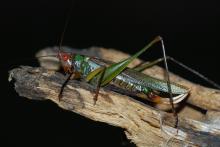
Species Types
Scientific Name
Orchelimum nigripes
Description
The black-legged meadow katydid is a gorgeous, strikingly marked katydid that hides among foliage. They are secretive and quick to hop away or move to the other side of a plant stem.
Media
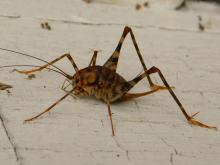
Species Types
Scientific Name
About 150 species in North America north of Mexico
Description
Camel crickets and cave crickets are odd-looking, hump-backed insects that are commonly found in caves, basements, cellars, and similar places.
Media
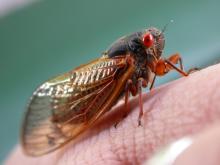
Species Types
Scientific Name
Magicicada spp.
Description
Periodical cicadas live as nymphs for 13 or 17 years underground, and then emerge simultaneously to metamorphose into their adult form. Tremendous numbers of periodical cicadas, calling all at once, are a memorable event.
See Also



Media

Species Types
Scientific Name
Cisseps fulvicollis
Description
The yellow-collared scape moth is more often “orange-collared.” And whether you think it looks more like a firefly or a wasp, it’s still a moth!
Media

Species Types
Scientific Name
Nearly 150 species in North America north of Mexico
Description
Slim, delicate plume moths are instantly recognizable by their T-shaped silhouette, long legs, and muted shades of tan and brown. It can be hard to separate the various species.
Media

Species Types
Scientific Name
Pyrrharctia isabella
Description
Not many people know the adult Isabella tiger moth when they see one, but we’re all acquainted with its caterpillar, the woolly worm, or woolly bear.
About Land Invertebrates in Missouri
Invertebrates are animals without backbones, including earthworms, slugs, snails, and arthropods. Arthropods—invertebrates with “jointed legs” — are a group of invertebrates that includes crayfish, shrimp, millipedes, centipedes, mites, spiders, and insects. There may be as many as 10 million species of insects alive on earth today, and they probably constitute more than 90 percent all animal species.





















